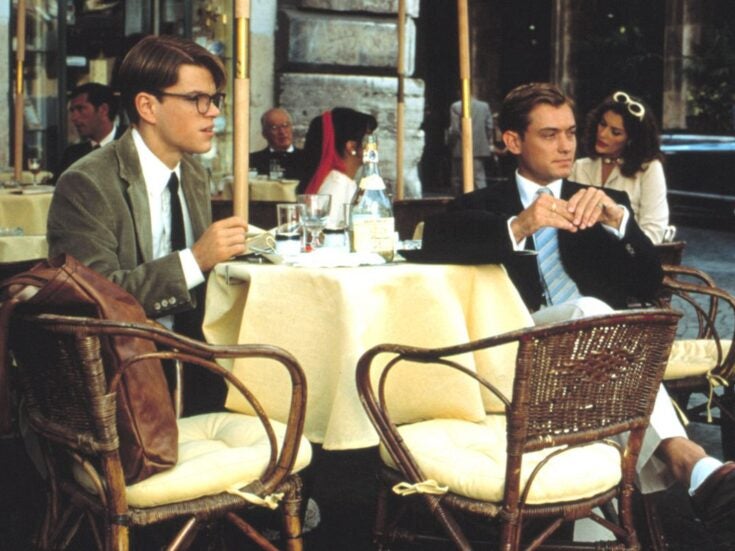From readymade art to DIY sushi, Hedgehog investigates
THAT’S THE SHIZ(ARU)
There is a room under Mount Street which looks like a prison cell crossed with a Byzantine basilica, golden glittering walls interrupted by heavy iron cell doors, keeping antiques under lock and key. A large wooden barber’s chair sits in a corner. If Sweeney Todd had been based in a better postcode, he might have plied his razors here.
But the four boys sitting on sofas in the room seem happily oblivious to the potential for terror, or at least enjoy the faint macabre suggestion of it. The three Khalili boys — Daniel, Benjamin and Raphael — are talking about their new gallery opposite the Connaught, Shizaru, whose basement we’re sitting in, with Simon, the gallery’s director.
The brothers have assembled a collection of 21st-cenutry pop art from emerging artists to sell in Shizaru, named after the do-no-evil monkey everyone forgets about. (You’d think after see, hear and say, do would be pretty obvious.)
Bouke de Vries has several pieces which take porcelain busts of Chairman Mao and emphasise the horror, making thousands of tiny porcelain skulls spill out of his head, or the absurdity, with birds sitting on his shoulder and bird mess covering his shoulders. A red Gucci stiletto by Darren Lago (1999) sits on a sole and heel six feet high. Antony Micallef has a gleaming nickel-plated bronze sculpture of two childlike angels fighting, like Marc Quinn meets Jeff Koons.
The gallery itself is hardly standard for Mount Street. When Hedgehog first visited to interview the boys, there was a deep blue forest downstairs, enclosing a wooden chest to display jewellery, but at the opening party there was instead a wall of golden mirrored hexagons. A narrow black corridor has more cells, one with Kelly McCallum’s stuffed flamingoes and their becrystalled legs, and two doors made to look like those of 10 and 11 Downing Street. (These hide the loos.)
The difference is the point, says Daniel: ‘We’re three young boys, trying to think as creatively as possible. It’s a breath of fresh air, people have told us, to the street. It’s the most beautiful street, but the juxtaposition is nice.’
The Khalili brothers, as most will instantly realise from their name, are not newcomers to the art world; the mere positioning of their gallery in the heart of Mayfair would tell you that anyway. Their father, Nasser Khalili, the British-Iranian billionaire property developer and philanthropist, has a world-beating collection of Islamic art and has endowed several chairs in Islamic art studies.
The lucky position exists for the brothers where their livelihoods do not depend on the success of Shizaru, but the business/pleasure division causes its own divisions. Raphael thinks that ‘most importantly we’re here to enjoy ourselves; that’s number one. We’re looking to contribute up-and-coming artists to people. Financially, obviously it’s a business and we’re looking to make money, but more importantly to give those up-and-coming artists a platform.’
Benjamin sees it the other way round: ‘I see it as more of a business, then we enjoy ourselves.’
Hedgehog left them fighting it out.
DIY SUSHI
Lunch at Nobu is nothing unusual. But lunch at Nobu with Nobu himself in attendance, who then demonstrated the restaurant’s new sushi kit for delivery, with all the fish pre-cut and the wasabi pre-mixed, before inviting you to do it too? That’s unusual.
After a meal of innovations, a large tiered Tezukuri (‘bespoke’) box, perhaps two feet by one, was set at the end of our table. Looking somewhat like the stacked shelves you see in beehives, each layer was engraved with a subtle ‘NOBU’. The first layer was filled with sushi rice, pre-sliced into bars, each enough for a handroll.
The next layer was filled with bright strips of fish, narrow columns of yellow-fin tuna and salmon and seafood, bright green avocado and cucumber, small dishes of salmon roe. There was clearly enough for at least ten.
The final layer had the kit: wasabi dispenser, hot sauce dispenser, pots of ginger and stronger wasabi, a wooden box of seaweed wrappers, a small wooden spatula for dealing with the rice, tongs for the fish, a jar and pipette for the soy sauce and — most intriguingly — a small metal mould and what can only be described as a compressor, to make nigiri. It was either a torture kit for fish or the latest thing to turn dinner parties upside down.
Nobu himself demonstrated that grace you hear about chefs possessing when using the kit (of which only five exist at the moment). He took a sheaf of seaweed and lined it up on his hand, where the fingers and the palm meet. He deftly scooped up some rice, set it on the seaweed, smoothly spread it out with the wooden spatula tip. Then he squeezed some wasabi on and added some tuna.
Now comes the science bit. You take the corner of the seaweed sitting by your little finger and fold it over the rice, halfway along the width, before rolling the restrained rice and fish up into a cone. Very important: roll it outwards, don’t roll the empty seaweed in. And voilà! A handrolled sushi cone. The one I made looked like frankensushi next to Nobu’s, but it tasted good. He stared at it for a while and looked puzzled.
The kit will soon be available to be picked up at Nobu Park Lane or Berkeley Street, and given the fun and relative simplicity of the procedure it seems sure to beat paintball for a sophisticated team bonding ritual.
And the man himself? Eloquent on how he was returning to the South American influences of his earlier days — his first restaurants were in Peru and Argentina, he said. He also revealed that he has started charging for green tea, which sounds either like a dull scoop or a belated business move, until he said that the profits are being given to a charity to help Japan. Finally: sushi with a conscience.
Nobu is At the Sharp End
HIGH-FLIER
Most City figures, if they publish, put out books burnishing their time at the top or excusing their scurried departure thence to a life beyond business. (‘Can you blame me for pushing him out of the window? If you can’t fall 32 floors, you’ll never succeed in business.’)
But David Rosier, founder of Mercury Asset Management and chairman of Thurleigh Investment Managers, has worked on a project of historical and familial interest: his high-flying father’s memoir of his years in the RAF, stretching from the Second World War to the depths of the Cold War.
Be Bold, the biography of Air Chief Marshal Sir Frederick Rosier GCB, CBE, DSO, does not lack for derring-do: ‘I was soon in a terrifying situation. My plane was on fire with burning fuel coming into the cockpit and my flying suit was in flames. I tried to open the hood to bale out but in spite of pushing with all my strength it was jammed… I was trapped… The pain was almost unbearable. The next thing I remember was falling through the air. The aircraft must have exploded.’ But there are also plenty of amusing situations and family memories.
His father’s letters, which are quoted throughout, held several surprises for David: ‘After he died I decided to complete the story. My mother gave me the letters that he had written to her from when they started going out in 1933 up to 1946. It was not until I read all the letters that I found out the detail of what he had got up to! I had not known that he had shot down two German aircraft during the three days he was in France in May 1940 before he was himself shot down and burnt [the incident above].’
And what has David, who himself spent five years in the Army before joining SG Warburg, learnt from his father’s career? How does the military life affect the City? (This is a topic Spear’s will be exploring soon.) David cites the importance of teamwork and sticking to your guns (as it were), as well as treating everyone the same, ‘from the most junior airman to the most senior Air Marshal’. Or, as a financier might say, from an equities analyst to the governor of the Bank of England.
Be Bold, published by Grub Street, is available in the Spear’s/Amazon store
TIES THAT BIND
As Spear’s reported last summer, investing in Sub-Saharan Africa is becoming a tempting, rewarding possibility. There is risk to spare, but there are also canny investors who see that a continent with 400 million people under sixteen and a rapidly emerging middle-class has plenty of opportunities. So far, however, only institutions — or HNWs with institutional money — have been able to access them.
Eric-Vincent Guichard, who worked at the World Bank before becoming CEO of Gravitas Capital, a boutique investment firm, is changing this, bringing private equity funds which invest in Africa, such as Actis and Aureos, to a savvy public. Homestrings is his new web portal allowing those in the African diaspora (or indeed just interested private investors) to invest in projects with social and financial benefits: it aggregates its investors’ money and then buys into the funds. There is no shortage of cash: the World Bank says $40 billion is remitted from the West to Africa each year.
‘The conventional wisdom was that most of those flows were consumed, and I doubted that because my relatives were using it to purchase land, to finance small businesses and the like,’ Guichard says over an early-morning fruit salad.
‘We do know that there is pent-up demand and we’ve designed the portfolio to be very professional, to treat individual investors as institutionals — to give them all the same due-diligence tools, transparency and information, and to attempt to demystify investment in Africa.’ You can pick from different industries and countries to make your investment (minimum £5,000) as specific as you like.
Guichard, who was raised in Guinea and studied in Senegal before Harvard, is keen to help investors correct ‘their win-loss ratio [which] is abysmal’ even as institutions make a 30 per cent return. The internet is the perfect force multiplier in investment as in so much else, assembling individuals into a more powerful crowd.

The Hedgehog is sponsored by B Capital Wealth Management
Illustration by George Leigh






